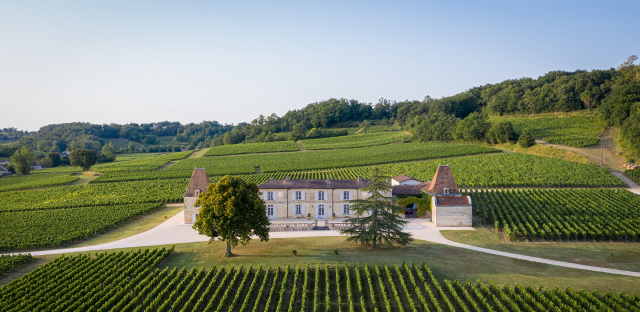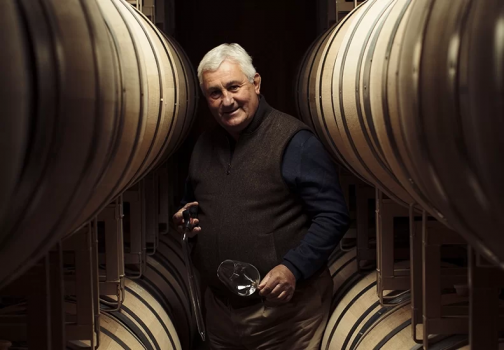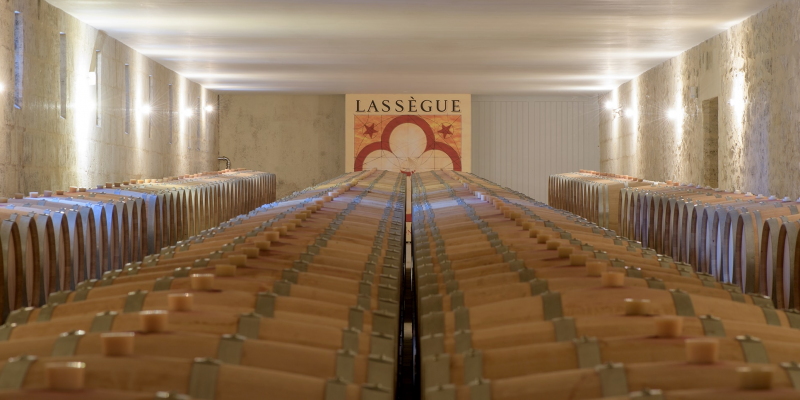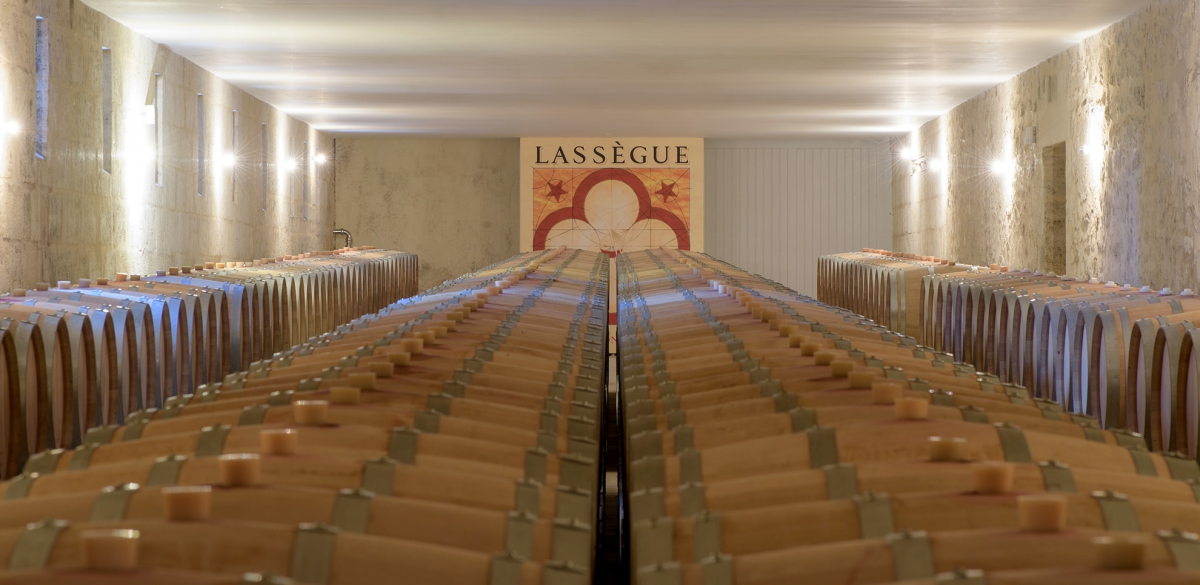A story of terroir and two families reaching ‘Grand Cru’ heights, by Carmelo Giardina |
Nestled on the Côte de Saint-Émilion, in Bordeaux, France, the modern history of Château Lassègue has been the story of two families, two generations and two continents. In 2003, Jess Jackson and Pierre Seillan, the founders of the project, recognized the potential of Château Lassègue and had the skills and resources to develop the estate, which had been previously associated with the Seillan family for decades. Together with their wives and partners, Barbara and Monique, they looked to the past to create and guide the future.
Historically, the California-based Jackson Family Wines brand exemplifies remarkable winemaking passion and an unbridled quest to craft world-class wines that grow within a sustainable environment. With its striking 18th-century Château and 36 hectares of sun-drenched vineyards and diverse soils, Château Lassègue sits in a unique position of honouring its heritage while also moving into a new era of sustainable winemaking practices.
 It might come as no surprise that the Lassègue estate was recently classified as a Grand Cru Classé winery in Bordeaux – a specific and governed classification that takes place every 10 years and recognizes the excellence of an estate’s terroir, vineyards, wines, reputation, and the estate’s management. The authority responsible for regulating France’s appellation system is the Institut National des Appellations d’Origine (INAO). With this recent announcement, Château Lassègue became one of 71 Châteaux in the Saint-Émilion appellation classified as Grand Cru Classé.
It might come as no surprise that the Lassègue estate was recently classified as a Grand Cru Classé winery in Bordeaux – a specific and governed classification that takes place every 10 years and recognizes the excellence of an estate’s terroir, vineyards, wines, reputation, and the estate’s management. The authority responsible for regulating France’s appellation system is the Institut National des Appellations d’Origine (INAO). With this recent announcement, Château Lassègue became one of 71 Châteaux in the Saint-Émilion appellation classified as Grand Cru Classé.
It was also announced that Château Lassègue was granted level 3 HVE (High Environmental Value) certification. The accreditation is awarded by the French Ministry of Agriculture and Food to agricultural properties that promote and guarantee environmentally friendly farming practices. Level 3 is the most stringent tier of the voluntary certification process. The wines of Château Lassègue will carry the HVE seal on each bottle, beginning with the 2020 vintage.
A top-tier, terroir wine
Planted to 55 per cent merlot, 35 per cent cabernet franc, and 10 per cent cabernet sauvignon, the average age of the property’s vines is between 50–60 years old, with many even older. The terroir here is one of the most diverse in the appellation with more than 10 different soil types identified from the crest of Saint-Émilion’s famous limestone plateau made up of calcareous soils with asteria limestone, to the slopes with clay and varying amounts of limestone, to the bottom of the hills that are primarily comprised of silica and gravel.
 The terroir-driven ‘Lassègue’ is the first wine of the estate. It’s powerful and complex, crafted from opulent and elegant hillside fruit which is grown, harvested, vinified, and aged according to the Seillan family’s distinct micro-cru philosophy. The harmony of merlot and the ample use of cabernet franc is complemented by the structure of cabernet sauvignon in this emblematic wine of Saint-Émilion.
The terroir-driven ‘Lassègue’ is the first wine of the estate. It’s powerful and complex, crafted from opulent and elegant hillside fruit which is grown, harvested, vinified, and aged according to the Seillan family’s distinct micro-cru philosophy. The harmony of merlot and the ample use of cabernet franc is complemented by the structure of cabernet sauvignon in this emblematic wine of Saint-Émilion.
I had the opportunity to taste two vintages that are separated by eight years. First 2010, hailed as a legendary vintage among Bordeaux wine enthusiasts; And next, 2018, which was viewed as a tricky vintage for some places, but largely a very successful one overall.
The terroir and the estate’s micro-crus express their nuances in these two vintage tastings. The know-how passed down through the generations, both in the vineyard and during the vinification and blending processes, results in authentic wines that truly reflect Château Lassègue’s sense of place. And oh, what a place.
2010 Vintage
According to the team at Lassègue, this was an excellent vintage, comparable to the breathtaking 1990 Bordeaux, which came after a beautiful 1988 and a magnificent 1989. The 2010 vintage was described as even brighter, richer, and more full-bodied than the exceptional 2005, with all weather conditions being ideal throughout the growing season.
Tasting this wine 12 years from vintage, I’m afforded the luxury of evaluating a top-tier right-bank Bordeaux at an optimum age – a true time capsule that speaks of a great vintage and shows just how beautifully it can unravel in its liquid form.
There’s 65 per cent merlot here, which gives the wine its softness and notes of black fruit and a mineral core. The blend balance is made up of cabernet franc (20 per cent) and cabernet sauvignon (15 per cent), which lends strength, structure and notes of cassis and spice. And still a remarkably deep and profound colour. Truly memorable and instantly classic.
2018 Vintage
Coming off winter and spring that were mostly mild and wet, mildew pressure – a characteristic of this vintage – required special attention in the vineyards to maintain the health of the vines. After this long rainy period, the summer was dry, and the clay and limestone soils’ capacity to retain water from the early rains tempered the effects of the dry summer.
Ideal weather conditions continued through harvest, and the result is a wine that shows both consistency and quality, largely due to the estate’s terroir which maximized the potential of the vintage, thanks to the 50-plus-year-old vines and the freshness from the limestone soils.
This is a rich wine, deeply concentrated with aromas and flavours that continuously develop in the glass – a sign of an expertly structured wine. The palate explodes with fresh, silky round red and black fruit flavours. The mouthfeel is warm and enveloping, like a soft blanket. But most noticeable is the balance of this wine (levelled acidity, alcohol and tannins), a reflection of the estate’s clay and limestone soils.

